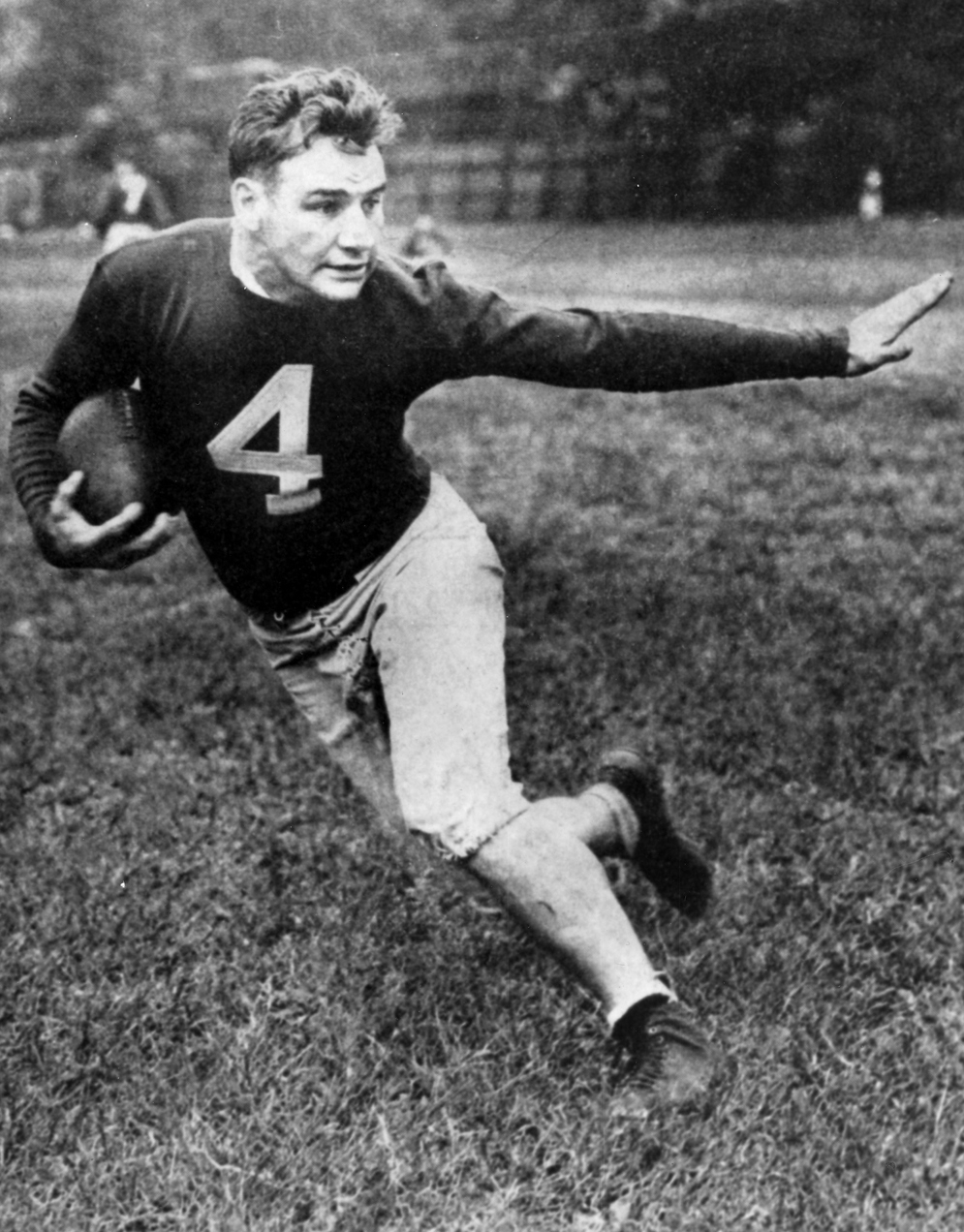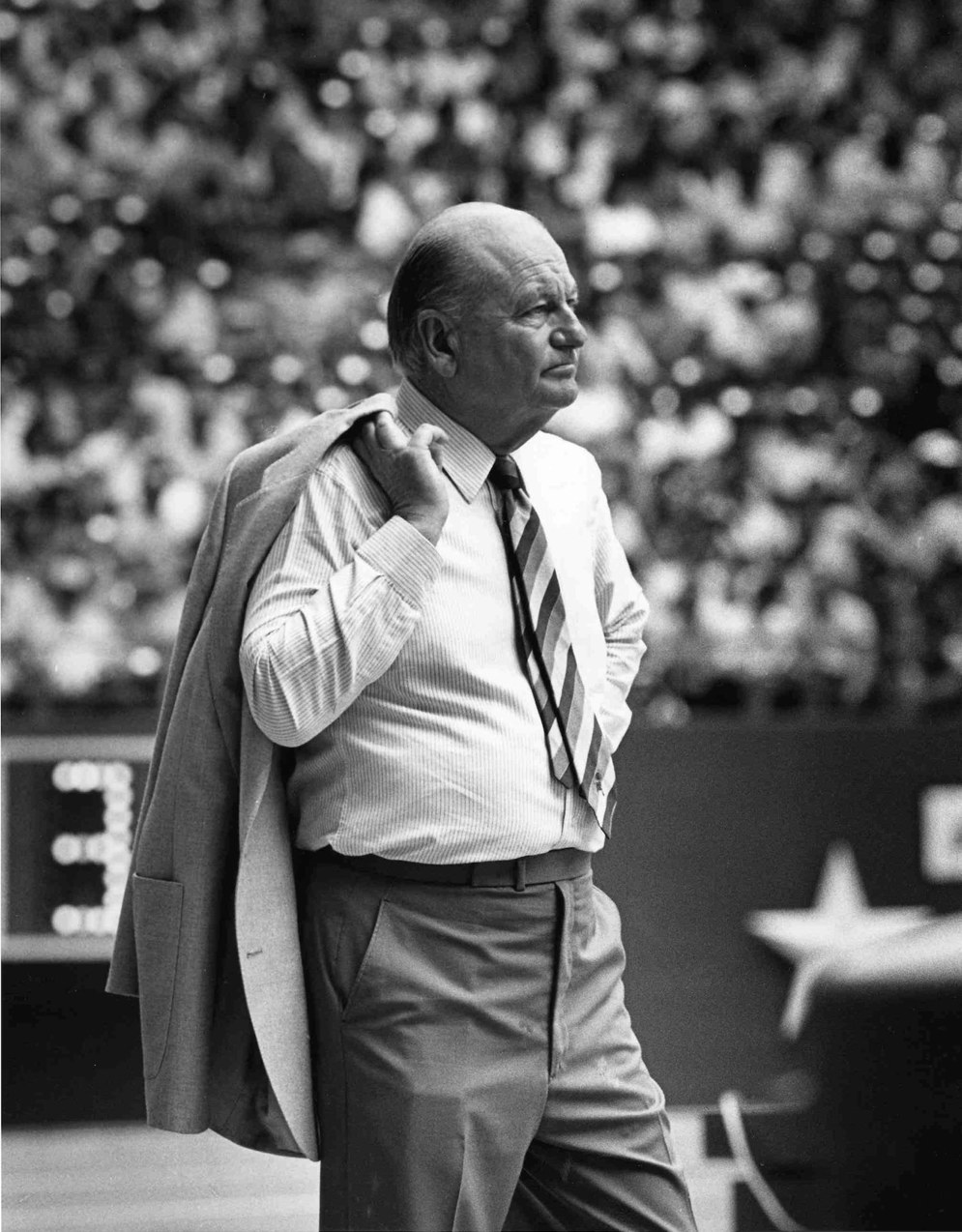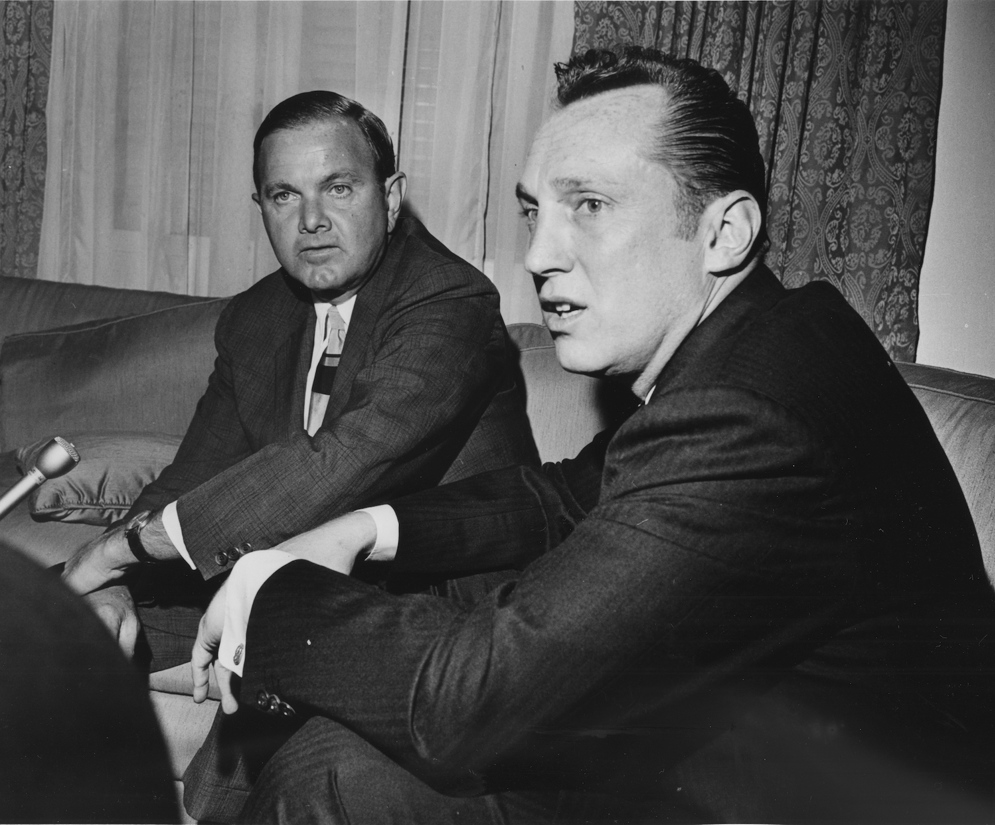The History of the Draft
Introducing the next wave of NFL superstars.
Introducing the next wave of NFL superstars.
After the NFL instituted its waiver system in 1934 to allow teams to pick up available players, Philadelphia Eagles co-owner Bert Bell felt that his team was at a disadvantage in signing top players. Without the monetary advantage that other clubs had, the Eagles and other teams with fewer resources had little chance of attracting impact players.
At a 1935 league meeting, Bell proposed that the NFL hold an annual player draft to level the playing field and make sure that every franchise remained financially viable. League owners voted unanimously to adopt his proposal, setting up the inaugural NFL Draft in 1936.
This first draft was a far cry from the spectacle fans have come to expect today. Held on Feb. 8, 1936, at Philadelphia’s Ritz-Carlton Hotel, clubs selected from a pool of only 90 players. There were no formal scouting departments, no agents and no 24-hour sports media coverage. The list of eligible players was compiled from newspaper reports, visits to local colleges by team executives, and recommendations to front-office personnel.
With the first pick, Bell’s Eagles selected Heisman Trophy winner Jay Berwanger from the University of Chicago. Rather than play pro football, the star halfback opted for a career as a foam rubber salesman. Berwanger’s choice wasn’t unusual — only 24 of the 81 players chosen in the first draft went on to play in the NFL. Most opted for more secure and stable professions, many of which paid better.

The New York Giants drafted fullback Alphonse “Tuffy” Leemans in the second round of the first NFL draft, after Wellington Mara, son of team owner, Tim Mara, watched Leemans star in a college game. Three seasons later, Leemans led the Giants to the 1938 NFL championship.
For many years, scouting was an afterthought for NFL clubs. Most allocated little of their front offices’ resources to player evaluation.
Still, as early as that first draft, the ability to identify football talent proved to be critical for one club, which came away with a future star that other teams had ignored.
With a second-round pick, the New York Giants selected fullback Alphonse “Tuffy” Leemans. Although the Giants didn’t have a scouting department, the team benefited from the informal analysis of a high school student (Wellington Mara, son of the team's owner, Tim Mara) who had seen Leemans star in a college game. In his third season, Leemans led the Giants to the 1938 NFL championship.
Successful NFL clubs separated themselves from the competition by identifying future talent through the draft.
With limited resources for scouting and thousands of collegiate players to evaluate each year, NFL clubs started to enter into partnerships to share the costs and labor (and eventually the expensive computer equipment required to crunch the numbers).
Two of those partnerships began in 1963: the Lions, Eagles and Steelers Talent Organization (LESTO, which became BLESTO when the Chicago Bears joined in 1964) and National Football Scouting (NFS), formed by the Baltimore Colts, the Cleveland Browns, the Green Bay Packers and the St. Louis Cardinals.
The following year, the Dallas Cowboys, the Los Angeles Rams, the San Francisco 49ers and the expansion New Orleans Saints created a group that would come to be known as Quadra Scouting.
These services allowed teams to focus on scouting and better evaluate players they were considering for the NFL Draft. Over time, the draft became an increasingly important tool in building a successful franchise.

As more clubs adopted similar practices, Tex Schramm, the president and general manager of the Dallas Cowboys, recommended to the NFL Competition Committee that teams work together to centralize the evaluation process.
Until the 1970s, teams typically didn’t give physical exams to their potential draft picks. In 1976, the New York Jets organization began inviting college seniors to its headquarters for physicals and interviews.
Other clubs followed the Jets’ lead, and top prospects were traveling from city to city for interviews and physicals. The process was time-consuming and expensive, and the players — who were still in college — often had to miss classes and were subjected to multiple X-rays and other repetitive tests.
In 1982, NFS, which had expanded to 16 member clubs, conducted its first National Invitational Camp in Tampa, Florida, bringing the top draft-eligible college players to one location to collect medical information. That camp featured 163 players — around half the number that attend today — and established the foundation for the current evaluation process for potential draftees.
By 1985, NFS, BLESTO and Quadra Scouting all were conducting separate camps. To share the costs of the evaluations, they decided to merge, and NFS, which ran the largest camp at the time, coordinated the combined event. After holding the camp in Phoenix (1985) and New Orleans (1986), the NFL moved the “combine” to Indianapolis, the home city of NFS, where it remains today.
Centralizing the camps improved the information that teams used to evaluate prospects, creating a more complete assessment of potential draft picks. Clubs not only were able to consider a player’s medical history, but could spend time on conducting additional physical and psychological testing on a player before investing a draft pick on him.
The draft, like the NFL, evolved in the face of competition — specifically the emergence of the upstart American Football League (AFL) in 1959. The competition between the new league and the NFL for draft picks was fierce.
The addition of another league meant more teams and more roster spots for drafted players.
With the revenue from the NFL’s television contract with ABC and the AFL’s contract with NBC, both sides had the money to compete for players. Both also went to great lengths to keep the other from signing players after they were drafted.
A plan hatched by the NFL’s Los Angeles Rams called for team operatives, known as babysitters, to develop relationships with prospects, even before they were drafted, to make them more likely to sign with the club. According to Michael MacCambridge’s book “America's Game: The Epic Story of How Pro Football Captured a Nation,” NFL Commissioner Pete Rozelle liked this strategy enough to have all NFL teams adopt it.

Pro Football Hall of Fame members Al Davis, owner of the Oakland and Los Angeles Raiders, right, and Ralph Wilson, owner of the Buffalo Bills, left, played important roles in the formation of the upstart AFL and the post-merger NFL. (AP Photo/Ed Kolenovsky)
The AFL would not be undone. In a 2009 interview with USA Today, Al Davis — the former San Diego Charger receivers coach, AFL commissioner and Oakland/Los Angeles Raiders owner — described what he did in those days to ensure that drafted players would end up with his club, and not the NFL team that had also chosen them.
As an example, when he was with the Chargers, Davis went to the 1962 Sugar Bowl between Alabama and Arkansas. The Razorbacks star receiver, Lance Alworth, had already been drafted by clubs in both leagues, with the AFL’s Oakland Raiders picking him in the second round (and then trading his rights to San Diego) and the NFL’s San Francisco 49ers drafting him eighth overall. To maintain his amateur status, Alworth couldn’t sign a pro contract until the Sugar Bowl was over — and knowing this, Davis rushed the field after the game and presented Alworth with a contract, which he signed under the goal post in New Orleans’ Tulane Stadium.
This competition continued— and salaries skyrocketed — until the two leagues agreed in 1966 to merge following the 1969 season, leading to a common draft.
In 1980, the NFL Draft took its largest step forward into the country’s collective consciousness when it was televised live. Commissioner Pete Rozelle was skeptical that the event would be a draw for fans, but agreed that it could be broadcast on a new all-sports cable network, ESPN.
There was indeed an audience for the NFL Draft. The event has grown each year, eventually moving from a smoky hotel conference room to the stage at New York’s Radio City Music Hall. The draft expanded to a three-day format in 2010, and moved out of New York City in 2015.
| Year | Draft Location |
| 2015 | Chicago |
| 2016 | Chicago |
| 2017 | Philadelphia |
| 2018 | Dallas |
| 2019 | Nashville |
| 2020 | Virtual |
| 2021 | Cleveland |
| 2022 | Las Vegas |
| 2023 | Kansas City |
| 2024 | Detroit |
| 2025 | Green Bay |

ESPN's Chris Berman looks at the draft board from the 1987 NFL Draft. ESPN helped make the NFL Draft a television event when it started broadcasting it in 1980. (AP Photo/Paul Spinelli)
The 2019 NFL Draft event set a record for the highest-rated and most-watched draft ever, according to Nielsen statistics, with a combined 3.9 households TV rating and average of 6.1 million viewers across NFL, ESPN, ABC TV and digital channels. NFL Draft telecasts combined to reach more than 47.5 million total viewers over the three-day day event, an increase of five percent compared to 2018 numbers. For the second straight year, all seven rounds of the event were aired on broadcast television.
The 2019 NFL Draft also broke attendance records as more than 600,000 fans took part in events in Nashville and celebrated the newest class of NFL rookies.
Now one of the most popular events on the NFL calendar, the draft attracts huge audiences — both on television and online — and has proven its value in building and sustaining successful franchises.